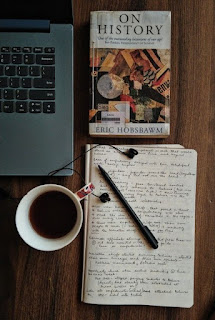Featured
- Get link
- X
- Other Apps
5 Resources You Need For a Research Paper
If you’re new to the history paper, or if it’s something you still struggle with it, scholarly research can seem like a daunting task. Not only do you have to sift through literally thousands of articles and book chapter, you also have to constantly question the reliability of the source and how it serves your argument. Over the course of my undergraduate career, I’ve assembled a short list of websites that have been GAME CHANGERS for the research process.
1. JSTOR
If you haven’t heard of JSTOR before, then today is a supremely lucky day for you. JSTOR is a database filled with pages upon pages of academic articles and books, all written by people who are scholars in their field. Most universities offer free access to it via their library. Check if you can login directly on the site using your institution’s login information. If not, go to your school library’s website and check to see if the service is offered to you there (it’s usually under a tab named “databases” or “resources”).
2. Wikipedia
I know, I know. Wikipedia is the bane of all professors’ existence, and they wish it had never existed so that students wouldn’t plagiarize their papers from it. In spite of Wikipedia’s questionable reputation, it has an abundance of resources that are just waiting to be used. Most students generally go to Wikipedia to get a general idea of a topic that they’re researching. If you find some interesting information that you thing may be useful to your paper, see if there’s a number in brackets next to it. If there is, scroll to the footnotes bottom of the article and look at the corresponding source. These sources are usually linked academic articles, or chapters from scholarly books. Using the footnotes at the end of Wikipedia articles can be an invaluable way to get resources you might not have found otherwise, particularly books.
3. Google Books
In the section on Wikipedia, I talked about how the footnotes at the end of the article often link to a book on Google Books. This would be great, but the problem is that Google Books often only include a few pages of the book you’re looking at. For access to the rest, you have to pay. After many times being left frustrated with a cut-off quote or passage, I figured out a way to look at passages from the whole book —not just the free parts. It turns out that if you do a keyword search (in the search bar on the left hand side, or by pressing Control+F), ALL the passages with that word or phrase come up, including the ones that were previously restricted. Even though you may not be able to look at the book holistically, or even see the entire page, you’ll still have access to the passages containing your search term.
4. Google Arts & Culture
I love art, so this one is definitely a favorite. Google Arts & Culture is available both as an app and in browser, and is a wonderful resource for finding photographs, material culture, sculptures, and paintings that are housed in museums around the world. Art can serve as a great primary source, and allows you to visualize the way people in the past perceived themselves and their beliefs. On Google Arts & Culture, you can search for artwork by time period, by color, by artist, and by medium.
5. Newspaper Archives
This last resource is a little hard to navigate, and can sometimes be confusing, but it is still an invaluable fountain of primary sources. Like with JSTOR, many universities also offer access to archival newspaper databases such as newspaperarchives.com or https://timesmachine.nytimes.com/browser. Newspapers can give you real-time accounts of people who lived through a certain period or event, and what they thought about it. You can even compare newspapers from different places and see how they differ! Of course, this only works for more contemporary research topics.
Some of the resources that I’ve mentioned throughout this post require payment. Even though there are hacks for getting around this, it’s usually best to check your university library’s page to see if you already have access to that service for free.
What do you use to find sources when you research? Let me know down below!
For a Youtube video on this topic, click here: https://www.youtube.com/watch?v=23_s8GRHqWc&t=697s
Next week we'll be learning about historical texts. I can't wait to share this information with you!
- Get link
- X
- Other Apps
Popular Posts
7 Things to Keep in Mind When Registering for Classes
- Get link
- X
- Other Apps
Stigma and Elitism in the History Major
- Get link
- X
- Other Apps



Comments
Post a Comment